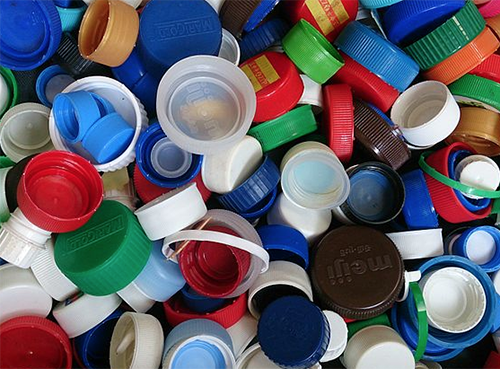All Chemicals
Ortho-phthalates
Phthalates remain the mostly widely used class of plasticizers, which impart flexibility to some plastics and rubbers, especially polyvinyl chloride (PVC or vinyl), when used in high concentrations (typically at 10% to 40% of the material by weight) [1]. Phthalates are also added to some adhesives, printing inks, sealants, coatings, and to catalysts used to make plastics. Food contact articles that may contain phthalates include dairy inflations, plastic tubing, conveyor belts, cap gaskets, disposable gloves, and food packaging made of plastic, paper, or paperboard.
Several ortho-phthalates are still commonly used in food contact materials, including DEHP, DINP, DIDP, DCHP, and perhaps DPHP. Several other phthalates have also been detected in food products including DEP, DMP, DIBP, DBP, and BBP [2].
Potential harm: Phthalates are not chemically bound to the polymer and can migrate into food and beverage products from food contact materials used in processing and packaging, and from environmental contamination. Migration is enhanced by higher temperatures, longer food contact time, and fattier food content. Phthalates have been found in many foods and beverages [3].
Cumulative exposure to phthalates poses significant health risks to children, especially from maternal exposure during pregnancy [4], with the highest exposures experienced by children and women of color [5]. The strongest evidence of adverse human health effects includes harm to reproductive health (especially in males) and to brain development. Phthalate exposure reduces anogenital distance, a marker of hormone disruption [6. 7] in male babies, which is associated with an increased risk of serious chronic disease. Sperm health is also impaired, reducing male fertility [8]. Phthalate exposure is linked to behavioral problems and attention-deficit hyperactivity disorder symptoms in children [6, 9], making it harder for youth to thrive in school, work, and life.
Status and trends: Throughout the world, many phthalates are prohibited from use in children’s products and child care articles. In Europe, most phthalates are restricted in plastics used for food contact and in consumer products. In the U.S., the state of Maine banned the intentional use of phthalates in food packaging effective January 1, 2022. Several food industry market leaders, including Nestlé and General Mills, are taking steps to remove phthalates from their supply chain.
Alternatives: Several chemical substitutes are widely available to replace the use of ortho-phthalates as a plasticizer. However, human exposure to alternative plasticizers has increased and data gaps remain on some of their potential hazards, including endocrine disruption.
A preferable solution is to switch to an alternative food contact material, such as most non-vinyl plastics, which do not require any chemical plasticizer. Such a material substitution will prevent consumer exposure to the largest source of phthalates and other plasticizers in food.
References
[1] McCoy, M. (2015). A Reckoning for Phthalates: As the plastics additives attract renewed scrutiny, industry looks for alternatives. Chemical & Engineering News, 93(25), June 22. Full report.
[2] Schecter, A., Lorber, M., Guo, Y., Wu, Q., Hun, S. H., Kannan, K., Hommel, M., Imran, N., Hynan, L. S., Cheng, D., Colacino, J. A., & Birnbaum, L. S. (2013) Phthalate Concentrations and Dietary Exposure from Food Purchased in New York State. Environmental Health Perspectives, 121(4), 473-479. https://doi.org/10.1289/ehp.1206367
[3] Cao, X.-L. (2010). Phthalate Esters in Foods: Sources, Occurrence, and Analytical Methods. Comprehensive Reviews in Food Science and Food Safety, 9, 21-43. https://doi.org/10.1111/j.1541-4337.2009.00093.x
[4] U.S. Consumer Product Safety Commission (2014). Chronic Hazard Advisory Panel (CHAP) on Phthalates and Phthalate Alternatives. Full report.
[5] CDC (2009) Fourth National Report on Human Exposure to Environmental Chemicals. Full report and executive summary.
[6] Chang, W. H., Herianto, S., Lee, C. C., Hung, H., & Chen, H. L. (2021). The effects of phthalate ester exposure on human health: A review. Science of the Total Environment, 147371. https://doi.org/10.1016/j.scitotenv.2021.147371
[7] Swan, S. H., Main, K. M., Liu, F., Stewart, S. L., Kruse, R. L., Calafat, A. M., ... & Study for Future Families Research Team. (2005). Decrease in anogenital distance among male infants with prenatal phthalate exposure. Environmental health perspectives, 113(8), 1056-1061. https://doi.org/10.1289/ehp.8100
[8] Radke, E. G., Braun, J. M., Meeker, J. D., & Cooper, G. S. (2018). Phthalate exposure and male reproductive outcomes: a systematic review of the human epidemiological evidence. Environment international, 121, 764-793. https://doi.org/10.1016/j.envint.2018.07.029
[9] Engel SM et al. (2021). Neurotoxicity of Ortho-Phthalates: Recommendations for Critical Policy Reforms to Protect Brain Development in Children. American Journal of Public Health 687-695. https://doi.org/10.2105/AJPH.2020.306014
See full list of resources here.
Information last updated: 10/28/2021


